
Runners are getting older. From casual runners who lace up their road running shoes for a jog around the neighborhood to long distance trail runners, new data shows that the average age of runners from 5k all the way up to marathon level is now around 40, up from 35 in 1986.
If you've been running for years, getting older might not have any impact on your performance, yet anyway. But if you're 50 or older and just thinking about getting into running, you might have some reservations about whether it's really something you can do.
Boulder-based health coach Gina Caputo was nearing her 50th birthday when she finally took up running on her local trails, but these days, picking up the pace in her trail running shoes has become a near-daily ritual for her.
“In college when prohibited, clandestine, late-night parties were the norm, I used to brag ‘I only run from the cops, otherwise running is for suckers’” she admits.
But the truth of the matter was less a point of pride and more a matter of adaptation – or lack of it. In high school she’d petered out of track and field, preferring instead to expend her energy on going to concerts, partying and relationships – a not uncommon trajectory for many of us. The result was that running slowly became more and more difficult and intimidating.
“I found running so physically taxing that I felt I had to mock it and those that did it to feel better about myself.”
It’s not that Caputo went from high school track runner to couch potato. Not by a long shot. She’s been a well-known yoga teacher for decades, and an avid hiker since moving to Colorado in 2012. She just made a point of not picking up the pace, preferring instead lower impact cardio and weights. By the time she reached her mid 40s, however, she started to notice changes in her body that her existing exercise routine didn’t seem to be able to offset, and it worried her.
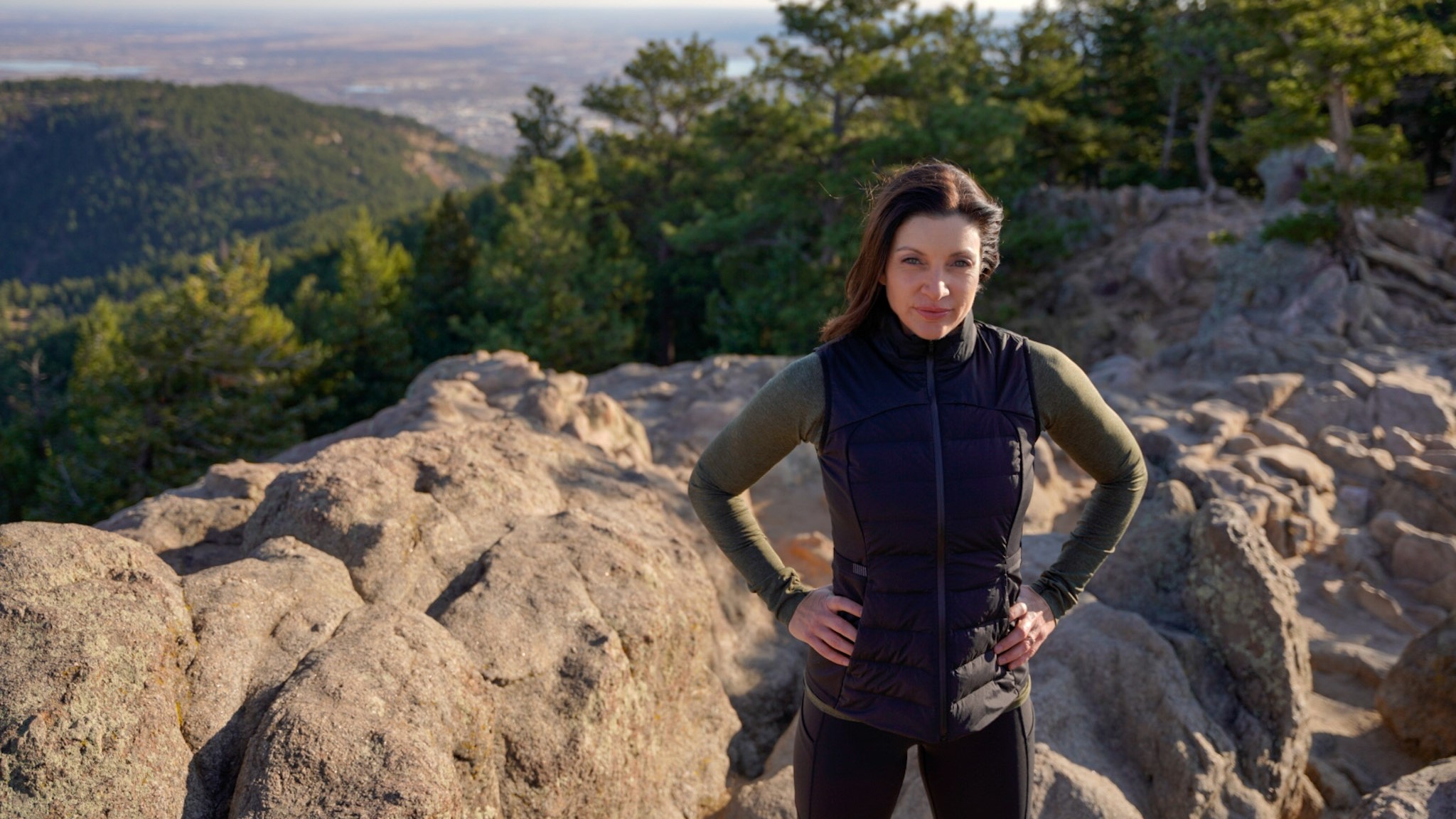
That’s when her friend, musician Michael Franti with whom she co-leads yoga retreats in Bali, confessed that the only thing that kept him in strong cardiorespiratory shape was running. He's a few years older than Caputo and explained that though it was generally awful at first, he found that running got better pretty quickly once he got started. Caputo took his word for it and started to add little jogs to her daily walk.
“I’d say, I’m going to run to the big tree stump, then walk again. Then, I’m going to run to the sundial, then walk again, then, I’m going to run to the turn, then walk again, etc. Eventually I’d start to connect segments and go past the tree stump all the way to the sundial, and so on.”
Soon, she found herself running more than walking until she was no longer walking at all and able to run the 3.1 mile loop in its entirety. Today, she runs it most days.
“I took my time building up to that with a commitment that I’d never run so much or so fast that I would ever dread running the next day. That has worked brilliantly,” she muses on her experience.
The approach of working up to longer distances isn’t new, but another aspect that Caputo says has helped her find success in running is a little more contemporary, and that’s using social media.
“I always listen to music while I run, so I started this habit of filming a 15 second dance mid-way through my run and posting it as an Instagram story. I was surprised when lots of people commented how inspiring it was, that I was making running look fun. So I kept it up daily as a form of accountability.”
Three years later, Caputo says she runs a 5k five or six times a week, and hears from other people regularly to say they are getting back into running thanks to her social media posts.
“I find that lacing up the shoes to go out and commune with nature is a ritual I don’t want to miss. It makes me feel more right with myself and the world,” says Caputo, who finds running akin to a moving meditation and notes that it helps her with creative thinking and problem solving.
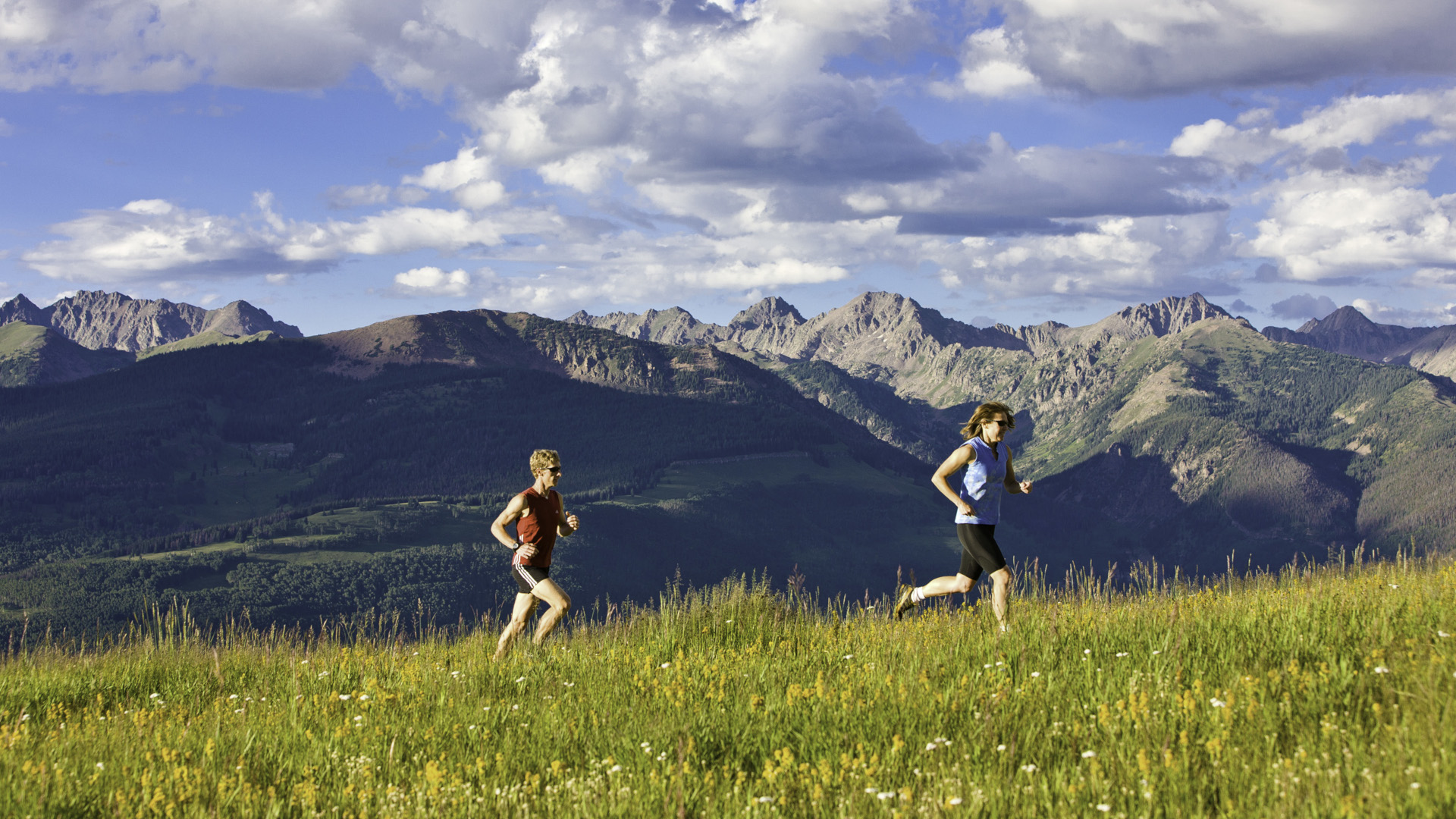
Caputo’s story is undoubtedly inspiring, and the evidence that running can have some amazing health benefits is overwhelming. Taking up running aged 50 or older, however, is still a daunting prospect for most of us. It’s harder to acquire fitness as we age, in part due to dropping testosterone levels, while for female runners menopause can play a role.
“Women 50 and older are going through or have already gone through menopause, and the fluctuation and decline in estrogen and progesterone can dramatically affect our physiology – everything from sleep to metabolism to muscle repair,” says Boulder-based ultra runner and coach Sarah Lavender Smith, author of the Colorado Mountain Running & Living newsletter, who adds that the physical and mental health benefits of running can help women feel better through menopause.
For Caputo, those benefits of running – cardiovascular fitness, stronger muscles and bones, improved mental health – all came within her reach, but she admits it took a while.
“A runner friend once told me “You have to give a lot to running before she gives anything back to you.” I took those words to heart and somehow they reframed the initial agony in that I believed there was something that would hook me and keep me coming back if I just stuck with it slowly but surely at first. And he was right, I crossed that point of return and now I get to fully enjoy the physical and mental benefits a little daily run gives me.”
If you’re interested in taking up running at 50 or older but unsure if it’s a good idea or even how to get started, we spoke to several running coaches who agree with Caputo that it’s more than possible. Here, each gave us their own tips to help you stay motivated, and injury-free.
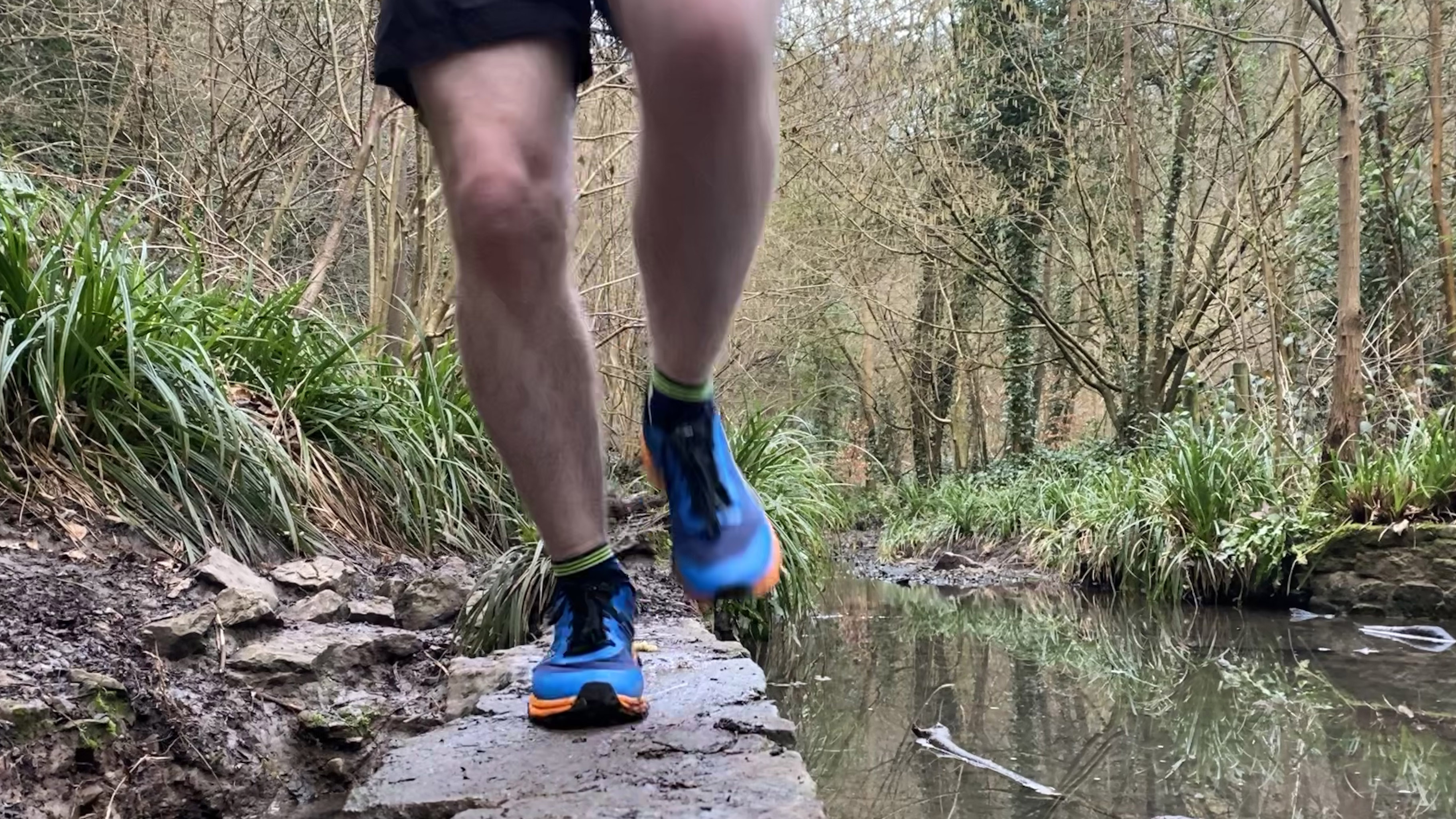
1. Get checked out
Admittedly, this is the step that most of us probably skip over, but when you’re planning on changing your fitness routine, getting a checkup at the doctor’s office is a good place to start.
“It’s always smart to have regular health exams, including a complete blood panel, to rule out conditions that could be problematic, such as an irregular heart beat or high cholesterol,” advises Smith, who says that it’s not just about getting the green light – even if you’re really healthy, an exam can actually be useful for training purposes.
“Getting your blood checked when you feel normal is useful to have a baseline reading, in case you develop anemia or any other condition that could be aggravated by intense exercise. A health exam also can be motivating, insofar as it can inspire you to run and do other forms of exercise to improve your health markers. Women in particular should get their bone density checked.”

2. Build up gradually
Once you’ve got your running shorts on and are heading out on the trail, don’t plan on spending the whole time – or even most of the time – actually running. In fact, if you’re significantly overweight and lacking cardiovascular fitness, Smith suggests walking before you can run – literally.
“I would suggest gaining fitness first through lower-impact aerobic exercise such as hiking or riding a stationary bike, then gradually add short intervals of slow running to those workouts. Otherwise, running may feel overly frustrating and uncomfortable.”
When you feel ready to actually give running a go, follow Caputo’s lead and try implementing short running intervals into a walk. This gives your muscles and connective tissue time to adapt to the new load that you’re placing on them by picking up the pace.
“The idea of going from no running to running for 30 minutes straight is awful. It’s a massive shock to your systems and doesn’t give them the opportunity to adapt. Walk briskly first, then start to add tiny jog intervals, no matter how slow they feel. Then start to increase those intervals gradually, always keeping it right at the edge of enjoyable. Challenging, but still enjoyable.”
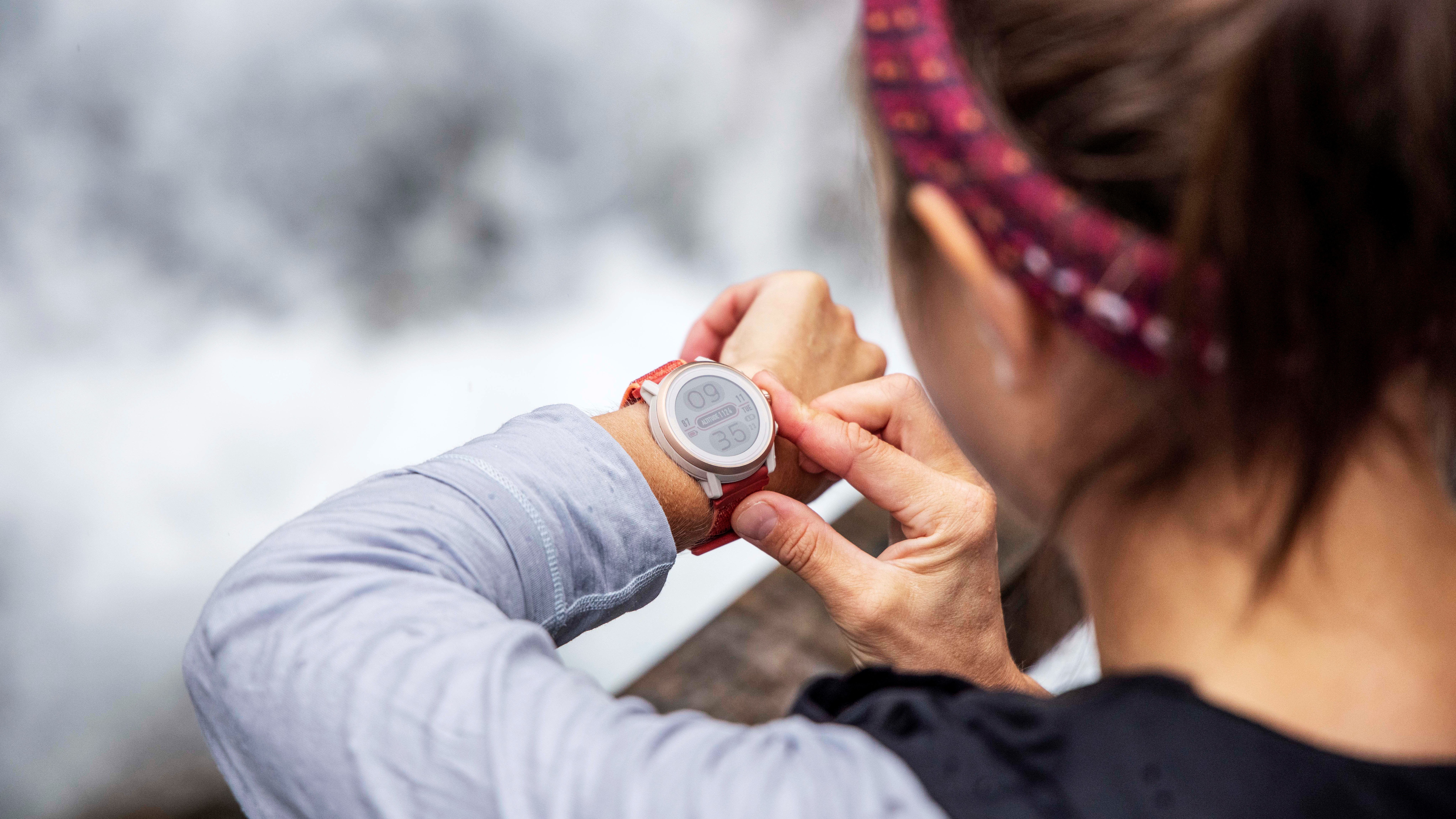
3. Forget about pace
With so much great running tech available these days, from GPS watches to heart rate monitors, it can be easy to get hooked on metrics, however Caputo recommends forgetting about numbers like pace and distance and paying attention to what’s taking place inside your body.
“One thing that really worked for me was focusing on my heart rate average and keeping it in high Zone 2, low Zone 3 rather than worrying about my mile pace.”
As we explain in our article on heart rate zones, in Zone 2 you should still be able to maintain a conversation, while in Zone 3 that will start to feel difficult, but the intensity is still moderate. This will mean running at a slower pace than you perhaps want to run, but you’ll still be in the aerobic zone, so you’ll be using oxygen for fuel, and burning both fat and carbohydrates.
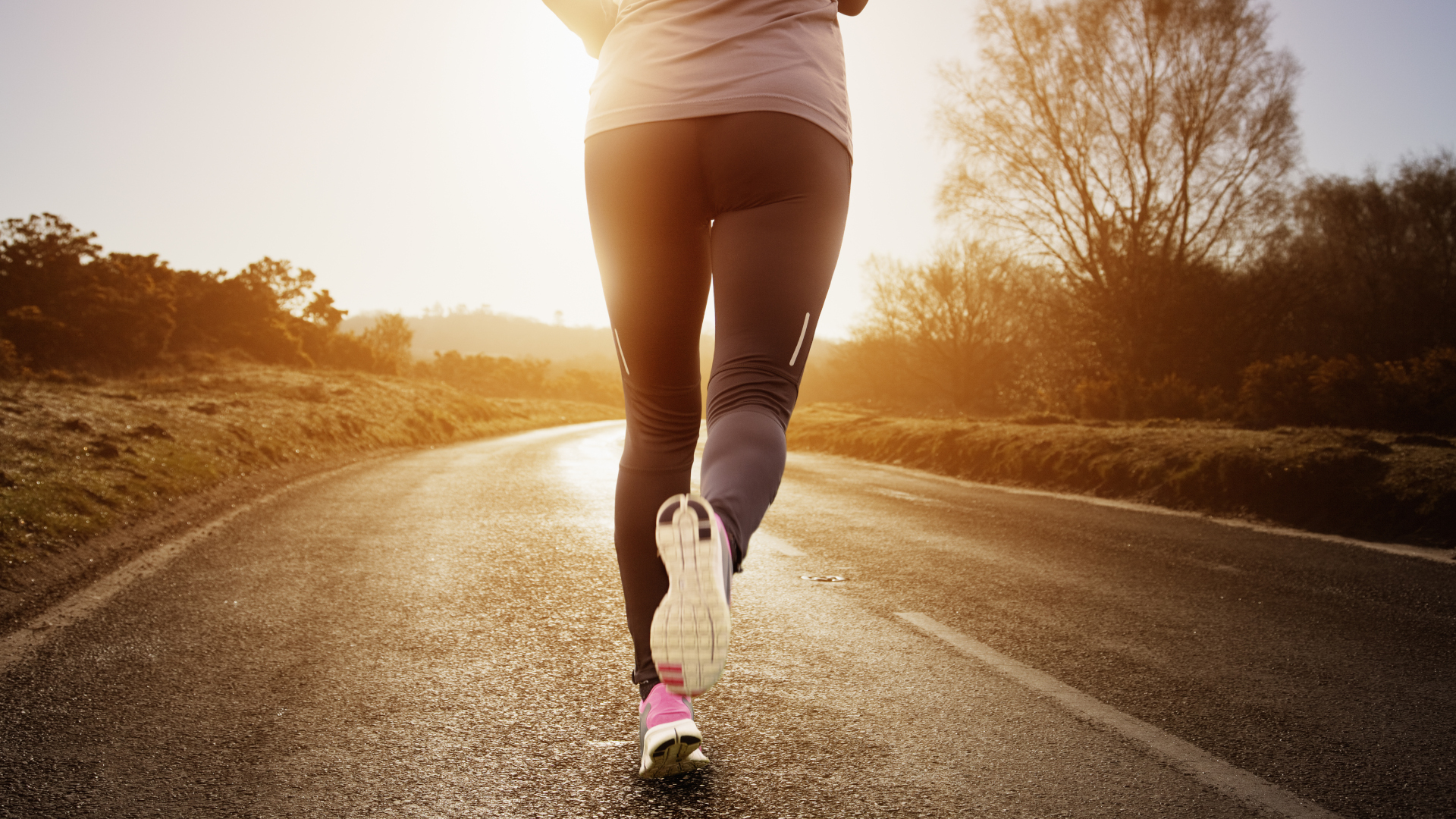
4. Consider surface
If you’re totally new to running, you may assume that the tarmac outside your house is the only option, or not understand the differences in surface, but it’s helpful to know that different running surfaces deliver different experiences, and require different gear.
Caputo runs mostly on trails, a softer surface which she credits for remaining injury-free throughout her journey, while for her part, Smith suggests working your way up to the dirt.
“Also, as much as I love and advocate for trail running, I would recommend starting on a smooth, mostly flat surface such as a high school track or a bike path to avoid the risk of tripping and falling on natural objects such rocks and roots. Add the challenge of uphill running gradually as you make progress.”
If you’re starting out on the concrete, a pair of lightweight road running shoes will be best, whereas once you move to trails you’ll want to seek out trail shoes with more protection and better grip.
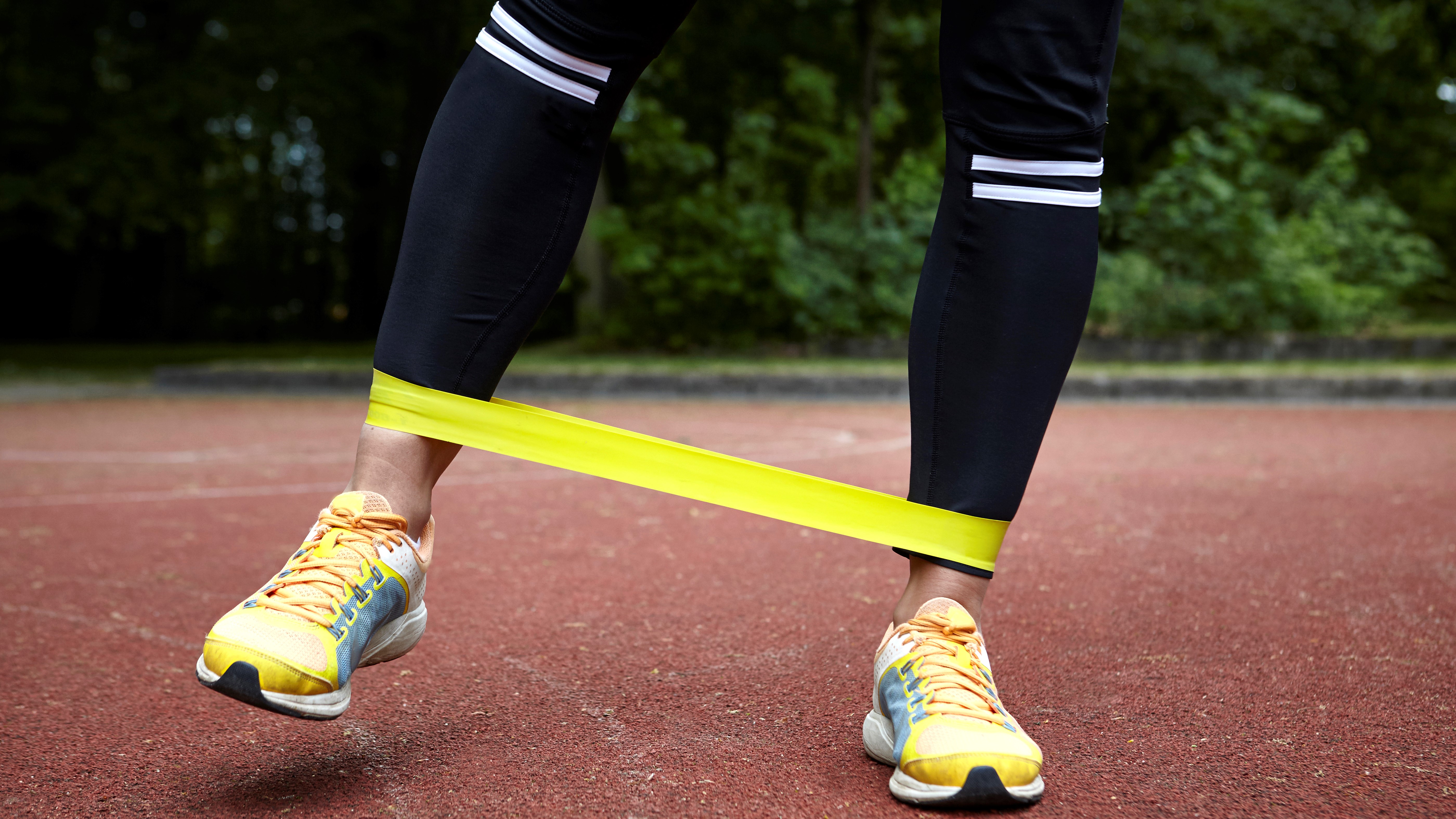
5. Add strength training
Running at 50 or older might seem like a recipe for soft tissue injuries – plantar fasciitis, patellar syndrome and shin splints, just to name a few. But registered dietician, endurance athlete and Ironman coach, Susan Kitchen, the owner of Race Smart, explains that taking up running later in life, when approached cautiously, might actually give you an advantage when it comes to your tendons and ligaments.
“The folks who start running later in life are the ones still running in their 60's and 70's. Those who start in their 20's tend to fizzle out due to injury, osteoarthritis, basically overuse, wear and tear. Of course, strength training and cross training are critical to success and longevity.”
It might seem as though introducing running to your routine is quite enough – do you really want to add weights too? A look at Caputo’s Instagram feed reveals her new love of running is easily surpassed by that of kettlebells, and adding strength training, whether that’s lifting weights or using resistance bands, is a sound approach to stabilizing your joints and combatting the effects of age.
“Being that they're new to the activity, an area to consider would be structural integrity. Making sure the tendons, bones and ligaments hold up well with the training. Adequate strength and nutrition should be considered,” says Matt Hensley, Coach and Founder of Boulder Underground.
Smith adds that regular strength training can also help to counter the loss of muscle and bone tissue that we all experience with age, though running itself will also help improve bone density.
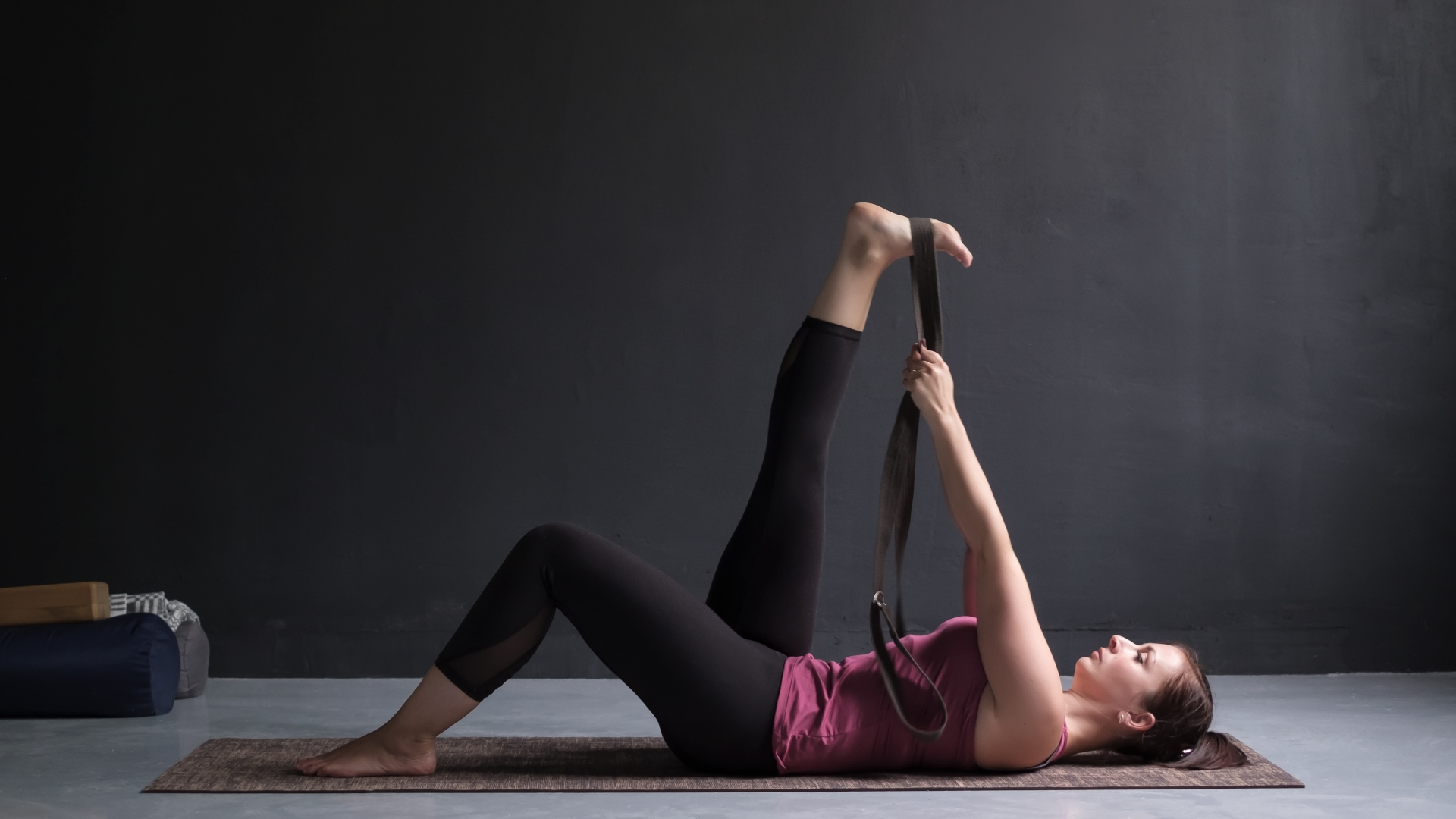
6. Stretch
Loss of mobility is another common symptom of aging, and without proper stretching, you might find that running inadvertently hurries this process along, as you strengthen certain joints within quite a limited range of motion. Caputo, however, says she hasn’t experienced any physical problems with running, something she credits in part to her commitment to stretching.
“My gradual approach with a commitment to never going so hard or so long that I wouldn’t want to the next day has served me well. I haven’t run into any physical challenges because I’m mindful about stretching.”
Check out our yoga for runners sequence for a short sequence that you can squeeze in at home after any run, and consider adding isometric stretching for better results.
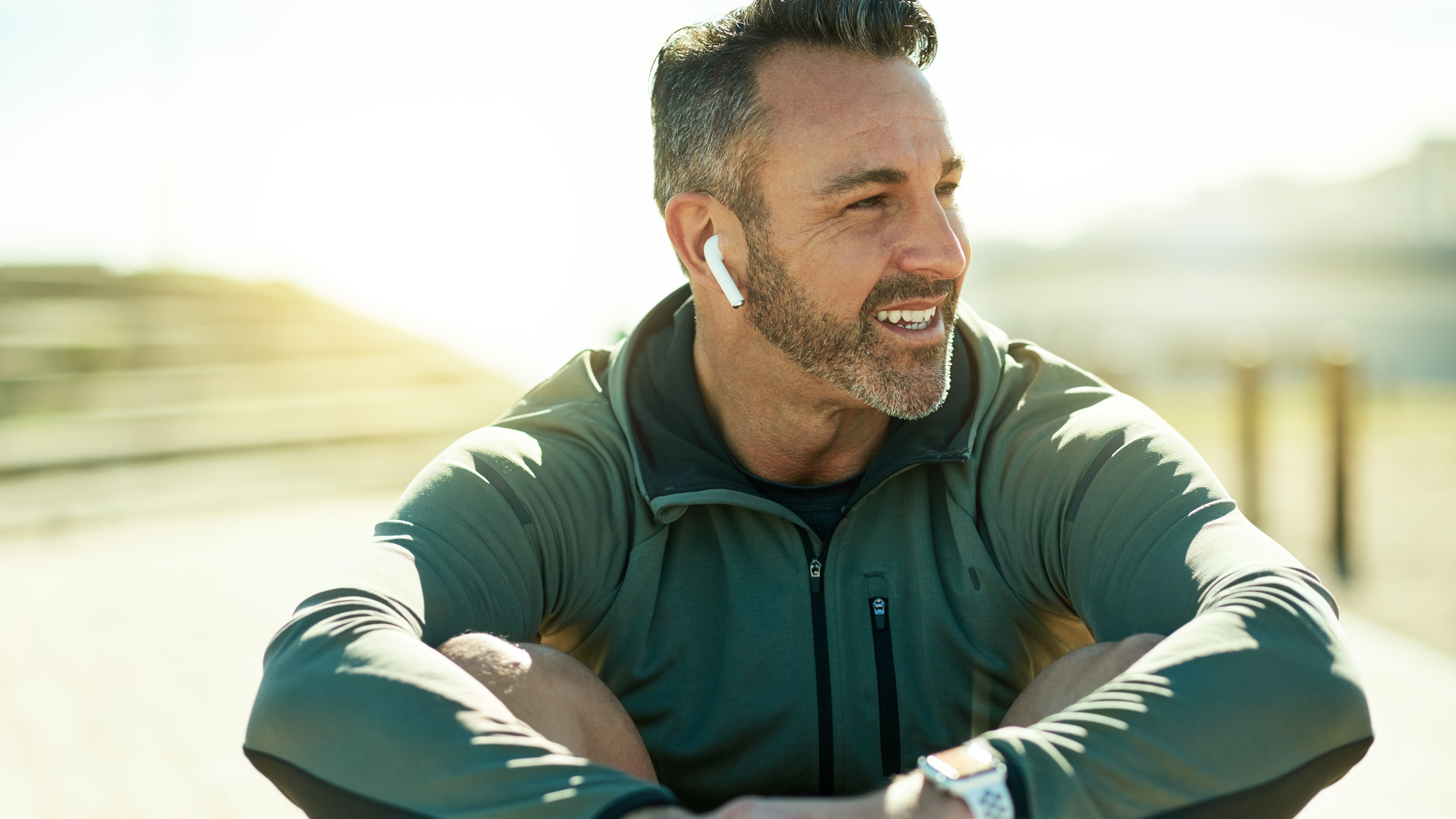
7. Rock out
Running with music isn’t for everybody, and running with headphones isn’t always safe, but studies suggest running with music can make you faster. For Caputo, it’s really helped to power her through those initial forays into running, and keeps fuelling her down the trails.
“Run to music that inspires movement and dynamism. I run to music that makes me move. I run to a lot of House music, 80s alternative and hard rock. Those types of music either propel me, tap into my inner badass or make me feel nostalgically joyful. I don’t recommend podcasts or mellow music for most people, let the music give you wings!”
If you are running on the road, or on a trail where you might encounter mountain bikers or wildlife, it’s a good idea to keep your ears free or compromise with a pair of bone conduction headphones like the Shokz OpenRun Pro that let you also hear ambient noise.
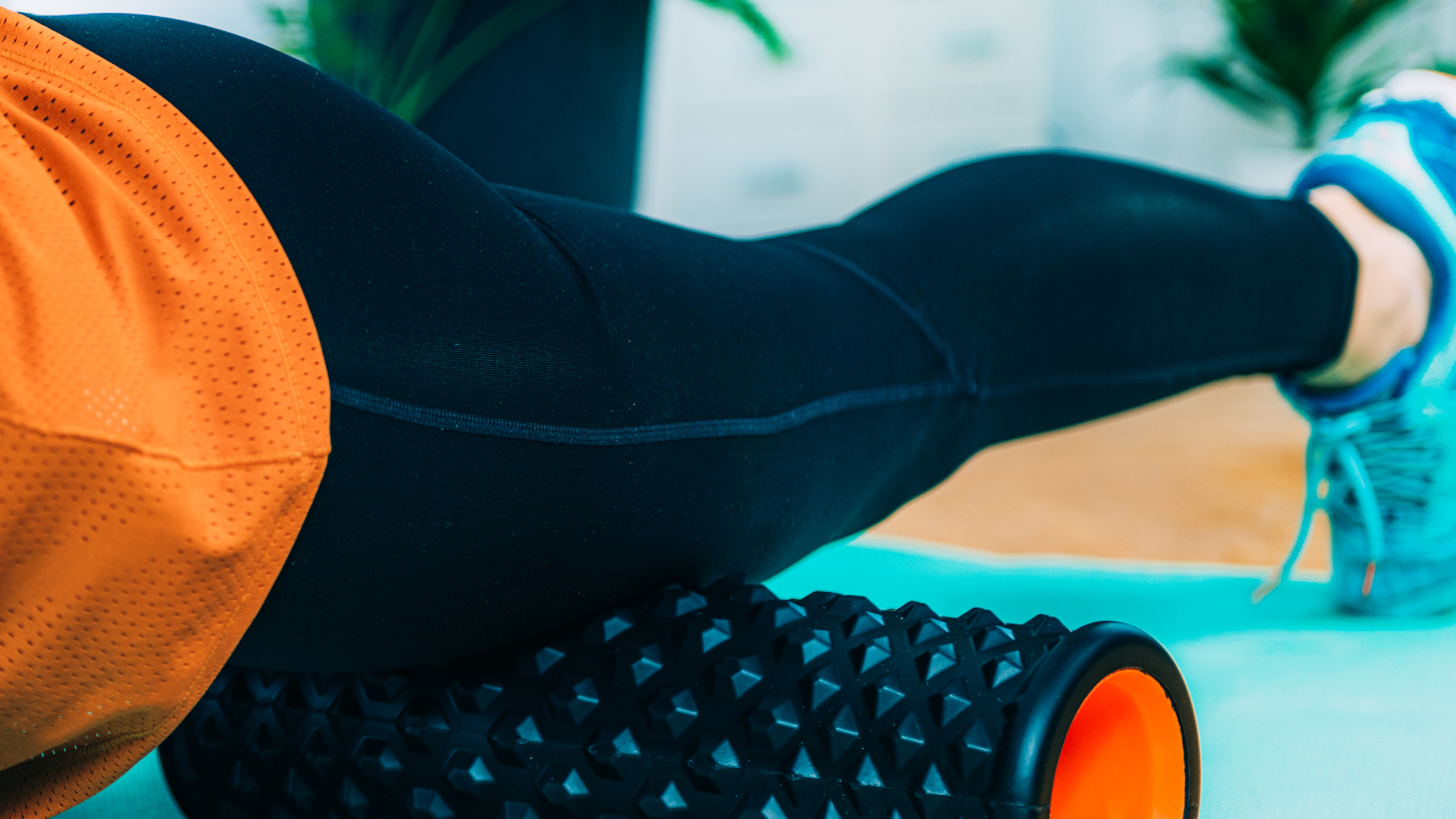
8. Recover properly
Once running starts to feel more enjoyable, and you even start to experience that elusive runner’s high from time to time, it can be easy to overdo things and risk overtraining, something that becomes more problematic as we age, according to Smith.
“Running creates added stress on the body, so it’s important to get adequate sleep and rest in between fatiguing runs. Be aware that older runners generally need more recovery time. Therefore, if someone takes up running later in life, I would recommend building in rest days in between runs.”
Smith recommends making the most of those rest days with active recovery sessions, and using them for your cross training and strength sessions, ideally with the guidance of a trainer at a gym. You can also take some time for some foam rolling for runners and even sports massage.







